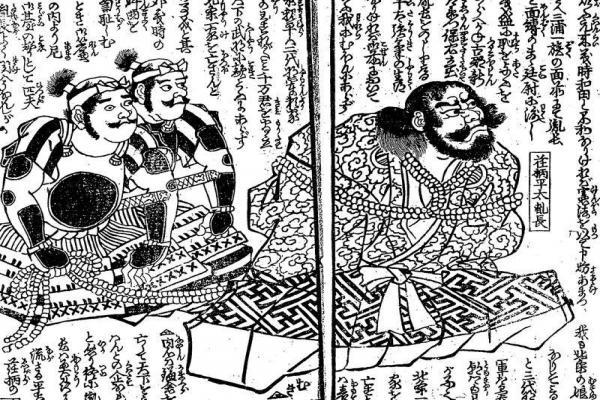Tie Me Up! Tie Me Down!
By nightloveblog on October 12, 2016- Tweet
-
- Pin It
Japanese invasion is obvious. We all know about samurai and their swords, ninjas, geishas. Nowadays it´s impossible to find a person that hasn’t tried sushi. Japanese culture is closely integrated into our everyday lives and sometimes penetrates in our bedrooms. We are not going to tell you how to become a geisha, not this time. Instead, we will go deep into the subject of Kinbaku and Shibari. Try to guess what are these…Never heard of but intrigued, right?
Both Kinbaku and Shibari are types of Japanese rope bondage. These are the ancient Japanese artistic forms of rope bondage that have many styles and uses originally started out as a form of incarceration in Japan in XIV century. During this time sokubaku (bondage) was practiced as a form of restraint, punishment and torture. There were no jails in Japan but they had lots of jute rope. So they used the rope to create poor circulation, immobility, and humiliating positions for prisoners. Different types of binding and different colors of rope were used to identify the types of crimes the prisoner had committed and the social class to which he belonged.
Kinbaku means the beauty of tight binding was used in Hojōjutsu the traditional Japanese martial art. Kinbaku is the more traditional term to describe the technical tying of rope and the art of erotic energy transmitted through the rope. It´s a dynamic living sculpture, shared meditative practice, deep relaxation for flexibility of mind and body, expression of power exchange, and intimate erotic restraint. The Nawashi (rope artist) creates almost geometric patterns and shapes that contrast wonderfully with the human body’s natural curves and recesses. Well, the Japanese are famous for making ceremony from everything.
Shibari is a Japanese word that has been adopted into western BDSM terminology and it´s widely spread out of the country. In Japan, this term means the act of decorative tying and encompasses everything from ribbons around presents, to purely aesthetic knotwork that has no functionality. There is no common association between the word shibari and bondage. However in the west Kinbaku and Shibari have become synonyms.
Bondage itself can be fun, but don´t forget about safety. Remember the Japanese were learning the art of shibari and kinbaku for centuries. So before you try we can recommend you to take bondage classes or at least watch some tutorials. Learning some basic anatomy, especially the locations of nerve centers is a must. Don´t forget about your limits and the limits of your body, push your boundaries not shove them. Do not overestimate your flexibility unless you’re a gymnast or yoga instructor. Do not tie the rope around the front of someone’s neck as well as cutting off the blood supply to a limb and its nerve endings can cause numbness in that limb that is more dangerous than it seems at the beginning. Don’t leave someone unattended in bondage. Firstly it´s not polite and secondly it also can be dangerous. Please note that any bondage activity is highly unrecommended for the people with diabetes, asthma, joint problems, blood pressure concerns and existing nerve damage.
Many people enjoy being untied just as much if not more than being tied. Therefore coming out of the bondage can take many forms. It could be a lingering sensual process in which you carefully help your partner to return to a normal position. This is also an excellent time to massage any stressed muscles or joints as part of aftercare. The most important thing to remember is that reading is no substitute for doing, so get out there and start tying! Practice makes perfect! Sex is easy but building a relationship is hard deep and requires communication and trust between partners.

You may also like...
-
Sex life
-
 nightloveblog | October 18, 2018
nightloveblog | October 18, 2018
-
 nightloveblog | September 26, 2018
nightloveblog | September 26, 2018
-
 nightloveblog | August 24, 2018
nightloveblog | August 24, 2018
-
 nightloveblog | August 16, 2018
nightloveblog | August 16, 2018
-
 nightloveblog | July 19, 2018
nightloveblog | July 19, 2018
-
-
-
 nightloveblog | May 30, 2013
nightloveblog | May 30, 2013
-
 nightloveblog | May 30, 2013
nightloveblog | May 30, 2013
-
 nightloveblog | May 30, 2013
nightloveblog | May 30, 2013
-
 nightloveblog | May 30, 2013
nightloveblog | May 30, 2013
-
 nightloveblog | May 30, 2013
nightloveblog | May 30, 2013
- deleted-FKbSsNZY | April 12, 2023
- deleted-FKbSsNZY | April 12, 2023
- deleted-4XMZR8Fb | April 9, 2023
- deleted-BN7rCGuO | April 9, 2023
- deleted-BN7rCGuO | April 9, 2023
-
Twitter
Sex and celebrities

Boy to play
nightloveblog | April 20, 2013Being the person who founded Playboy and the man who always has many beautiful young women at hand, Hugh Hefner is practically the synonym of sex. But how many...

Clinton Gay Marriage
nightloveblog | April 11, 2013The former US Secretary of state Hillary Clinton has spoken in favor of same-sex marriages. She informed about this in the video published on the site The Human Rights...
About
Welcome to Nightloveblog! This dating blog is about love that takes place at night – it’s all about passion, temptation, seduction and sweet hot sex… It’s not only a sex guide, blog about physical relations between two people, but also about the sensual side of every person which rules our senses, emotions and subconscious at night… This love blog can help you learn something new about sex and challenge your sex life. As soon as you learn something new for yourself, make theory work in practice. Come and tempt yourself at Nightloveblog! Seduction is really big and it all starts with the sunset…They are looking for dating in UK
Tags
sex sex life have sex good sex love relationships orgasm about sex you didn't know relationship sex relationships men and women what women think about female sexuality what men like in women sexy women sexual intercourse make love sex women fall in love oral sex about love relationship problems get satisfied lesbian foreplay climax sex positions hot sex female libido nsa dating cheat on partner adultery pros and cons sex language how to climax female orgasm age difference legal rights sex and food sexual fantasies
Copyright © 2017









